- How to Propagate Monstera Guide: The Three Ways to Succeed - September 17, 2021
- Escargot Begonia: Why Is The Rex Begonia So Rare? - August 31, 2021
- Rieger Begonia: When You Can Expect The Hiemalis Begonia To Flourish - August 31, 2021
Pothos plants come in a wide array of sizes, leaf shapes, and color variegations. Not only is this a diverse plant, but this type of tropical plant is also one of the easiest to grow and care for, which is why so many beginner gardeners choose to start their gardens here. Despite it being a very easy-to-care-for plant, it still has a few guidelines that must be followed in order for it to grow healthy and happy. And, the main guideline to consider for a Pothos plant is water.
Water, Water Everywhere
Sure, Pothos plants are tropical plants that have their origins in Southeastern Asia and many Pacific islands, but they still don’t like water everywhere all the time. If these plants get too much water and sit in it for too long, they will develop critical problems. Let’s examine a few of the critical problems faced by overwatered Pothos plants, then, we can talk about how to prevent those problems and how to deal with those problems if they should occur in your plants.
Critical Problems on Leaves
Pothos plants feature leaves that should be some shade of green, whether that is lime green, neon green, dark green, or variegated green. When these plants are overwatered, their leaves will be the first sign that something is wrong. Leaves can have one or any number of these symptoms at a time, so it is not necessary to check off every leaf problem before diagnosing the plant as being overwatered. Let’s look at these leaf symptoms more thoroughly.
Brown Spots
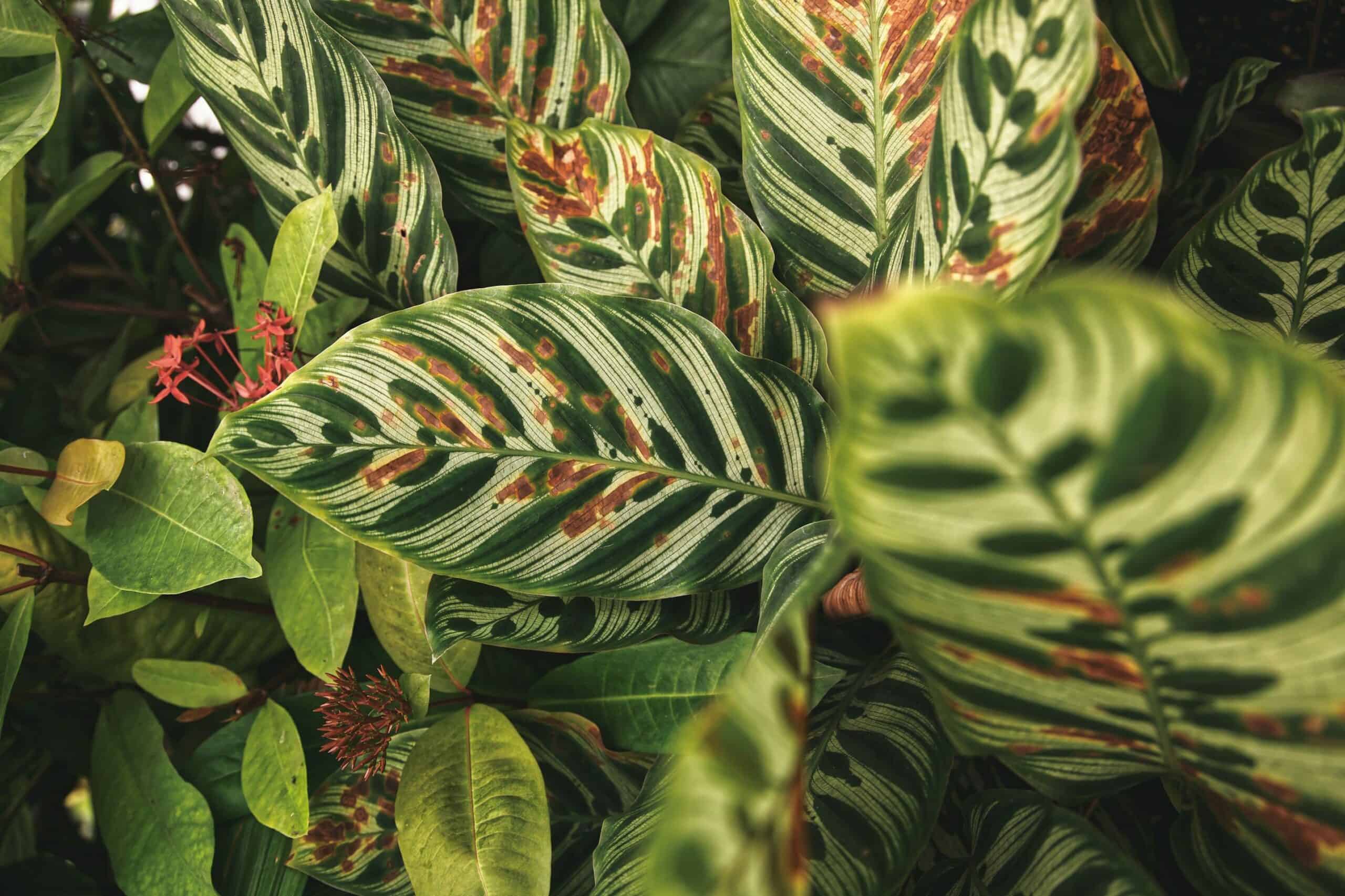
Leaves with brown spots do not always signal that the plant has been overwatered, but it is the most common reason for them. If your plant’s leaves have some brown spots and you are suspicious that the plant has not been draining off excess water very well, you very likely have an overwatered plant.
Curling
Leaves that begin to curl are showing signs of stress due to water issues. These curled leaves are actually not getting enough water, which sounds odd because the plant is overwatered.
The reality is, these leaves are not getting enough water because the root system is so damaged by being saturated with water that it cannot properly transport water to all areas of the plant. The curl in the leaves is an attempt to conserve water by reducing the rate of water transpiration.
Mushiness
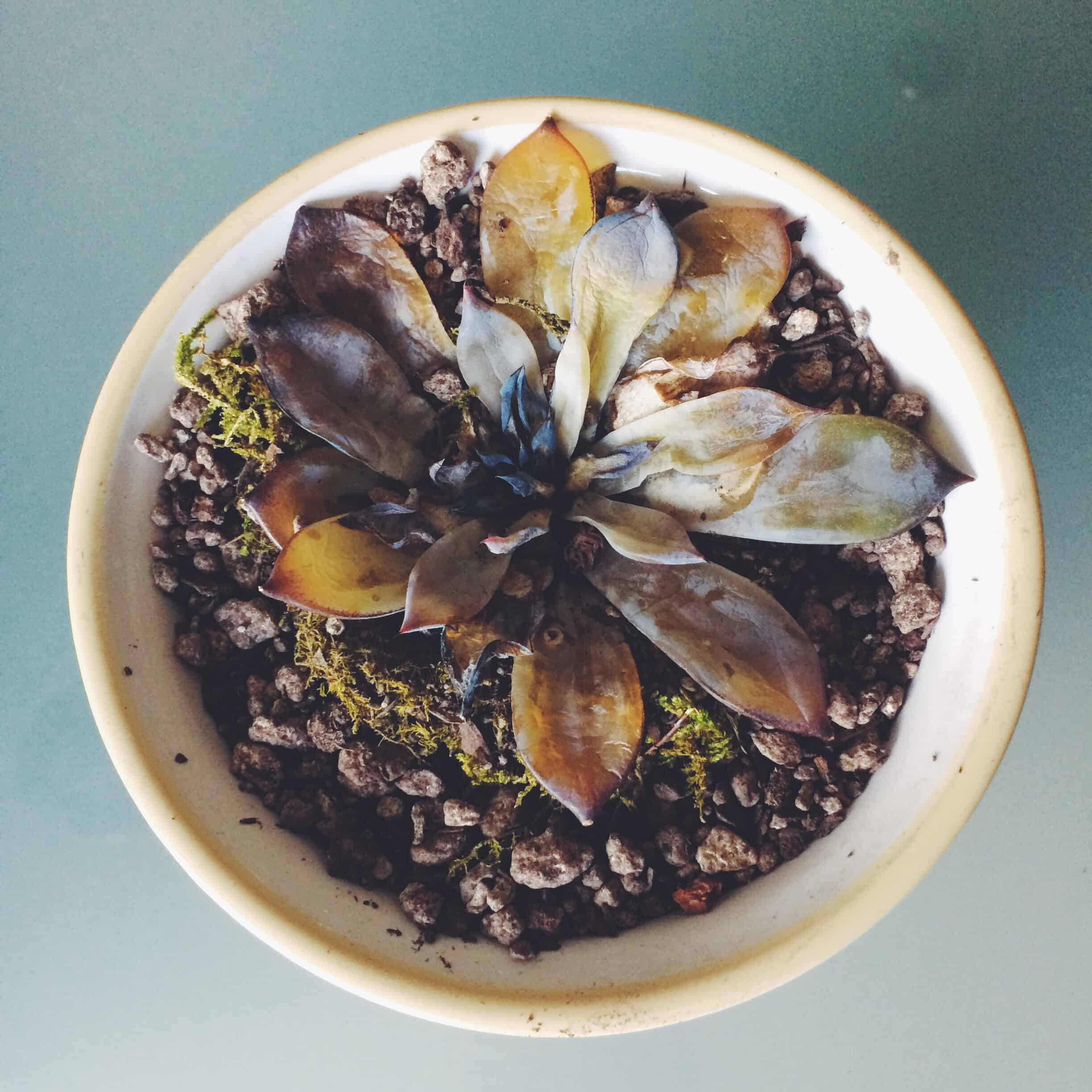
Another sign that a plant is being overwatered is that its leaves will be soft and mushy when touched. At this point, the plant is saturated with water.
Odor
Sometimes leaves will give off a mildew-like smell when they are overwatered.
Translucence
Leaves that are slightly see-through are signaling that they are getting way too much water.
Wilting
Wilted leaves are a sign that the plant is probably beyond help and will die shortly.
Wrinkling
Leaves that are wrinkling unnaturally are another sign that a plant is overwatered.
Yellowing
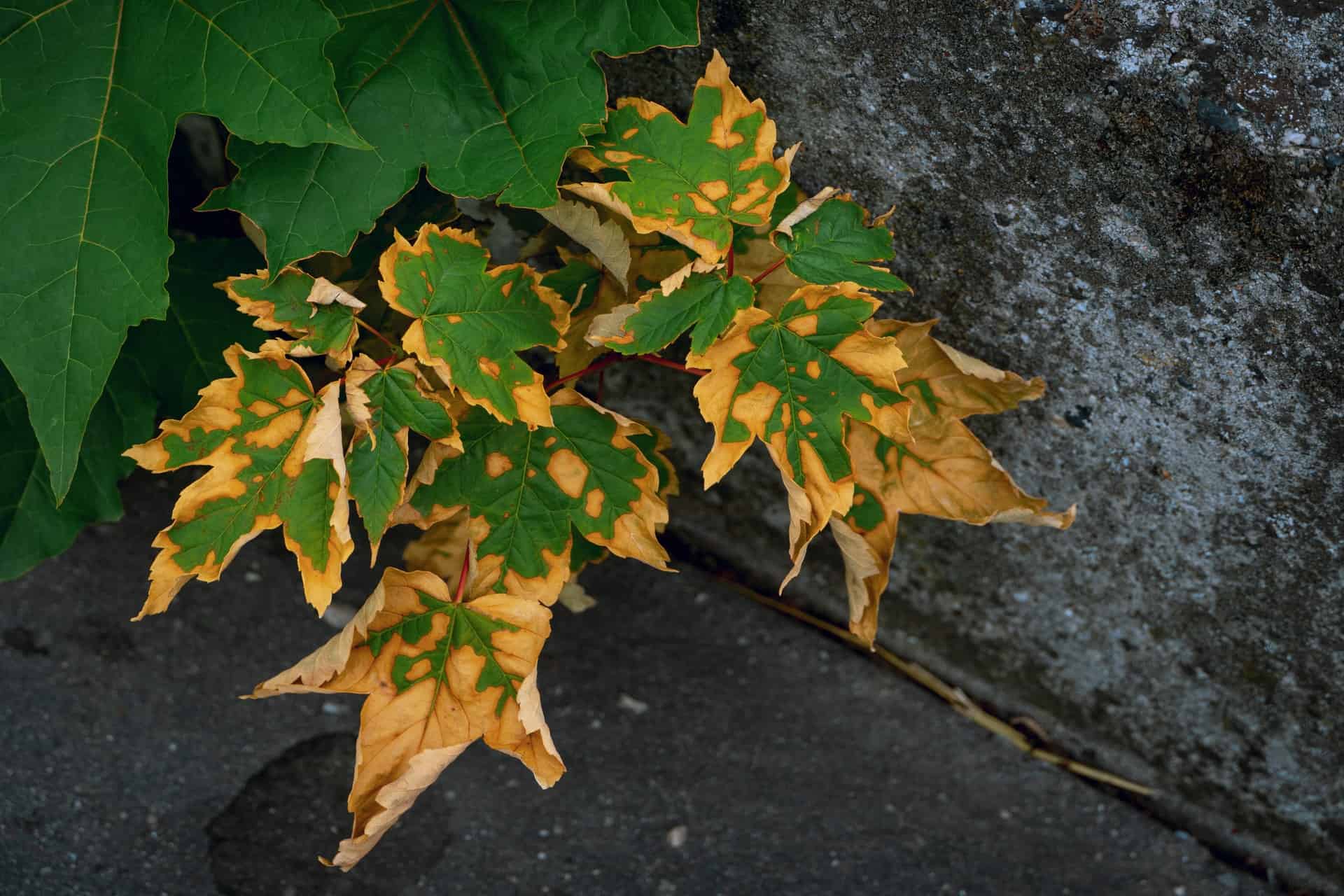
Leaves that are turning yellow are signaling that the plant’s root system is waterlogged and may not be working properly.
Critical Problems on Roots
A properly functioning root system is what every plant needs in order to be healthy. Once the root system goes out, it is unlikely that the plant will survive. It is difficult to watch and examine a plant’s roots since they are typically covered by soil, but if you are careful to observe what you can see above ground, and act quickly, the root system should not be harmed.
Root Rot
This is the term used in gardening for plants that have a root system that is injured, diseased, or under a form of stress. The most common reason for root rot is overwatering. When a plant is given too much water or is allowed to rest in standing water for a long period of time, its roots begin to drown. Yes, roots need oxygen too.
Typical signs of root rot are roots that have turned brown and are soft and mushy. Most root systems feature roots that are long, white, and firm. If you are suspicious that your plant may have root rot, you can examine its roots by carefully digging off the soil that covers them.
Critical Problems on Stem
Another major player in determining the health of a plant is the plant’s stem. This part of the plant needs to be in good shape in order to hold up the leaves and transport water to those leaves. A stem that is unable to do either of these is a stem that is facing a serious problem.
Mushiness
A mushy stem is not a healthy stem. This is a sign that the plant is saturated in water and needs some oxygen.
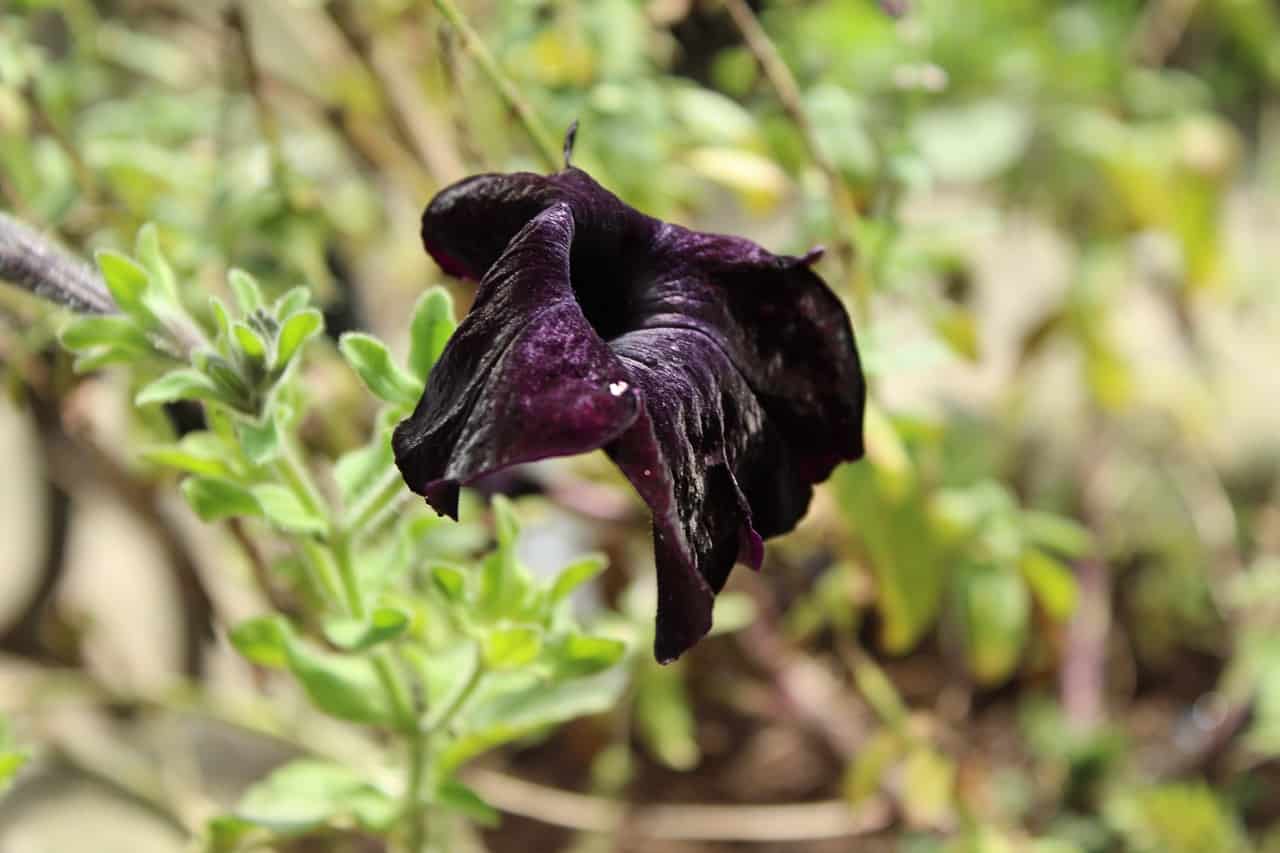
Critical Problems on Soil
The health of your plant’s soil is another way to determine the health of your plant. Keep a close on this very important aspect of gardening.
Moldy Soil
If you notice that the soil where your plant is growing has white powder on top of it, you probably are growing some type of mold. This is a tell-tale sign that the soil is waterlogged.
Pests
Certain types of pests love soggy plants and soil. If you notice fruit flies or fungus gnats flying around your plant or crawling on the plant’s soil, you can be sure there is a water issue.
Identify the Problem, Find a Fix
While it is certainly much easier to care for an underwatered plant than for one that is overwatered, it can be done. If you have identified one or more symptoms that have diagnosed your plant as an unfortunate casualty of your zealous watering skills, then you need to find a fix before it’s too late. So, let’s talk about those problem-solving fixes next.
Assess the Damage
If your plant has only begun to show signs of being overwatered, and those signs are not severe, then you may just need to back off from watering it for a few days or weeks. Let it have some air to breathe and should recover. If, however, your plant has been struggling for a while and its symptoms are severe, you may need to try some different methods to fix the problem.
Provide Drainage
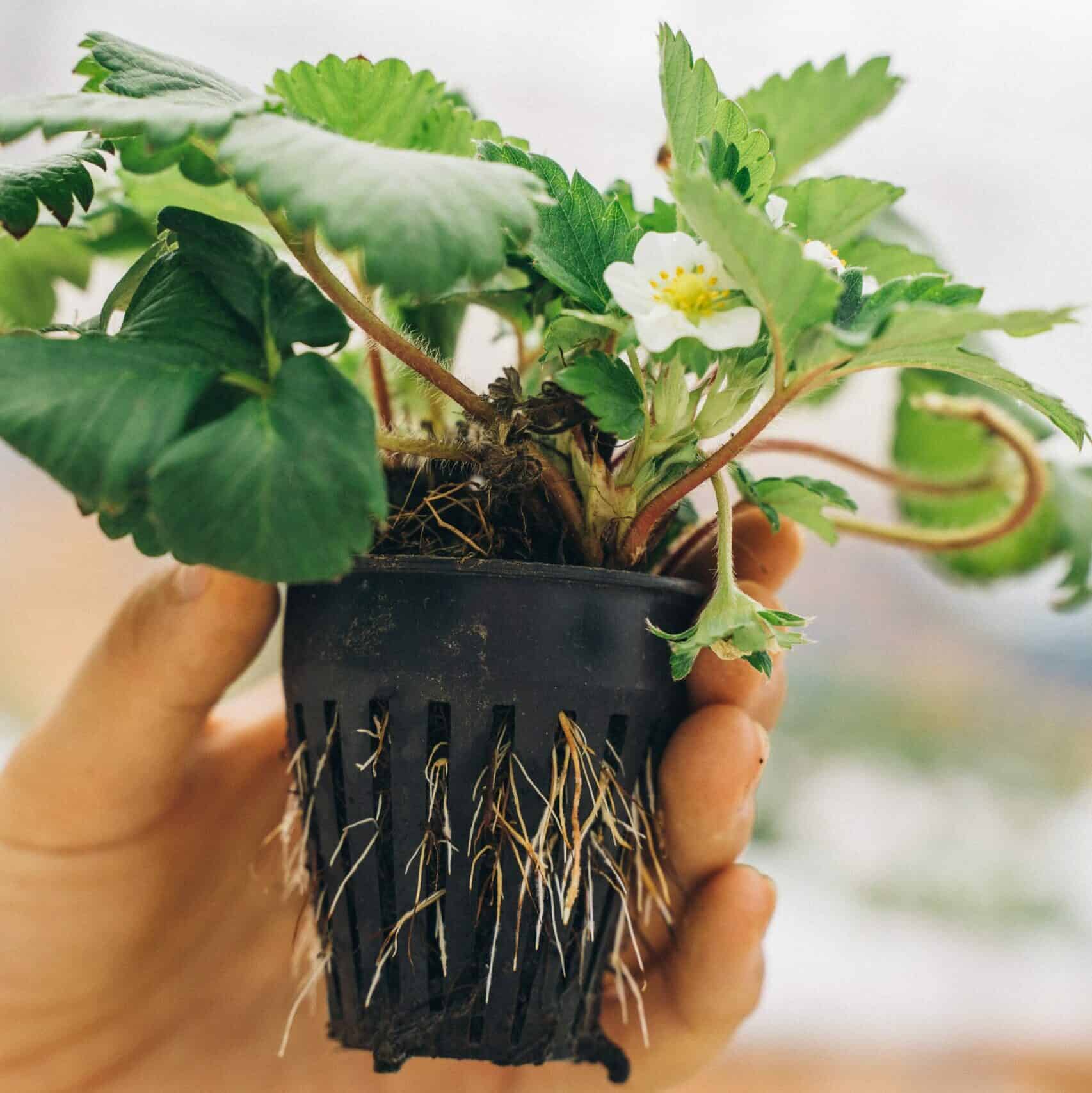
Examine the drainage holes of the plant container holding your plant. Make sure they are not clogged and excess water is able to drain through them.
Also, check the type of potting soil you are using. Pothos plants require soil that drains well, so, if you don’t have that type of soil for your plant, you need to change it out.
Resist the Urge to Water
An overwatered plant does not need any more water clogging up its home, so don’t water it, even if you really want to. While you’re at it, resist the urge to fertilize it as well.
Spray Fungicide
Fight mold and fungal infections in the plant’s soil with an application of a fungicide.
Stir the Soil
If you move the plant’s soil around a little, it can provide air circulation to the roots and help the saturated soil to dry quicker.
Switch the Soil
Potting soil that has been saturated with water may not dry out quickly enough to save the plant. If this is the case with your plant, you may want to consider repotting it. The first step is to carefully remove the plant from its current container. Next, you should decide if you want to clean and dry the current container or use a new container. Finally, fill the container of your choice with fresh potting soil and set your plant into the soil.
Trim the Damage
Leaves that are brown or yellow can be trimmed off the plant since they will rot in time. Roots that are rotten can also be trimmed off. No matter what part you are trimming, remember to use clean and sterile cutting utensils. Trimming the plant will also help it recover faster since it won’t be working overtime to send nutrients to rotten parts.
Prevention is Better than Cure
When it comes to overwatered plants or most any problem, it is better to learn how to prevent the problem than to treat the problem. Let’s take some time now to examine how to properly water and care for any variety of Pothos plants.
Learn Correct Watering Methods
Pothos plants have some requirements for how they should be watered. Before you bring your beloved Pothos a drink, it is recommended that you learn just how they like it served up.

What Not to Do:
- Do not water the leaves of Pothos plants
- Do not water a Pothos plant that is sitting in soggy soil
- Do not allow a Pothos plant to sit in drought-like conditions
- Do not water a Pothos plant during the hottest times of the day
What to Do:
- Water a Pothos plant either early in the morning or when it gets cool in the evening
- Water a Pothos plant from the bottom up if you can’t avoid its leaves
- Water a Pothos deeply so that excess water flows out of its container’s drainage holes
- Allow the Pothos time to drain off excess water before setting it on a saucer
- Test the soil before watering
- Be sure the entire surface of the plant’s soil has been watered so it will be distributed evenly
Know When a Pothos Plant Needs Water
Look for the following signs to determine if your Pothos plant needs a drink:
- The top 50% of its soil is dry to the touch
- Its soil is light brown
- Its soil has cracks running throughout its top layer
- Its leaves are shrinking
Provide Proper Water
If your tap water has a lot of mineral buildup in it, you may want to consider providing your plants with rainwater or filtered water instead. If neither of these is convenient for you, then set out a container of tap water for 24 hours in order to allow some of the minerals in it to evaporate.
Utilize Technology
If you are uncertain about when to water your Pothos plant, or perhaps, you are busy with many plants and can’t keep track of them all, then you need to take advantage of modern conveniences. Download a plant watering app and spare yourself the hassle of tracking watering sessions on paper or in your head.
Provide Proper Soil
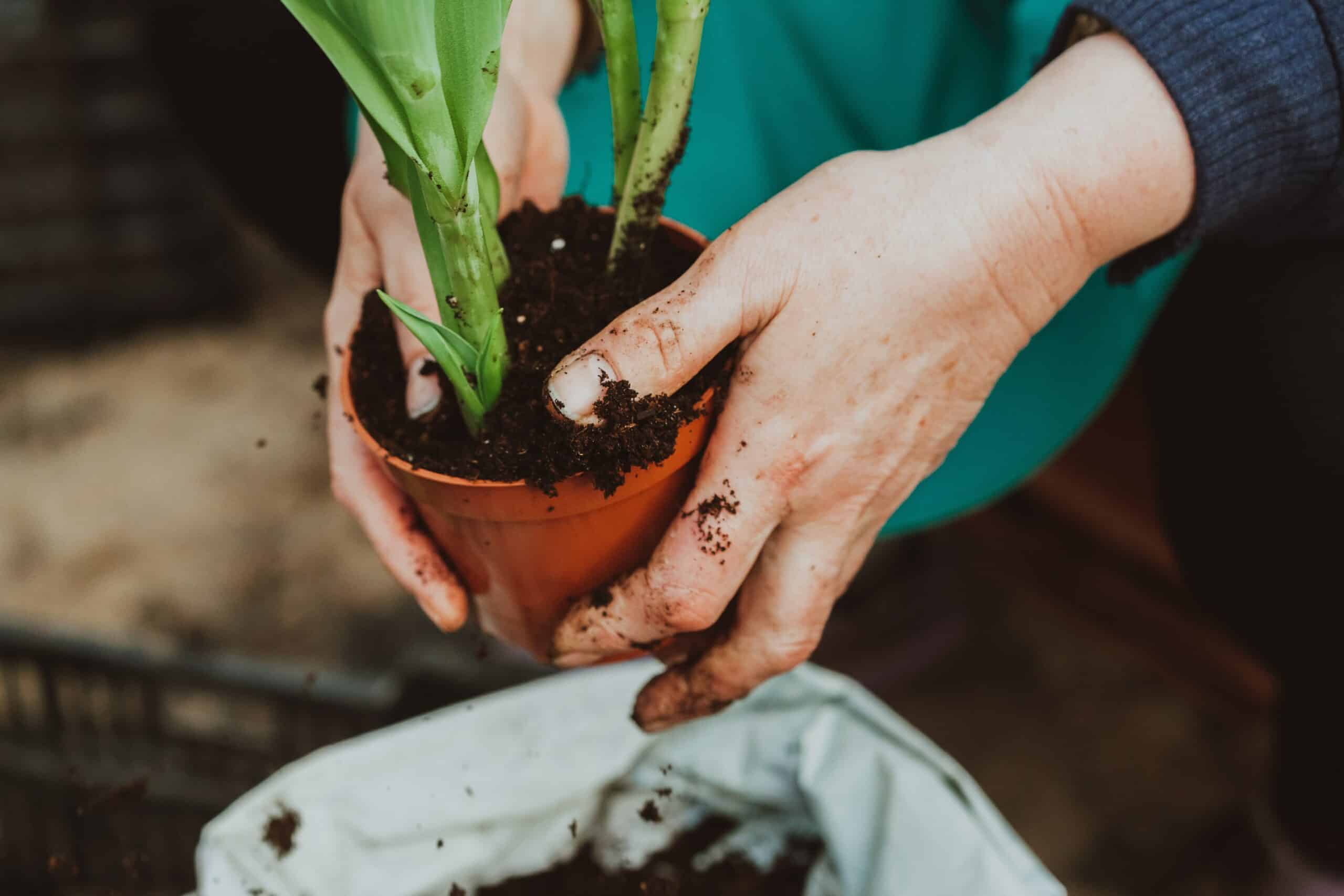
This is the key to a healthy and happy Pothos plant. If you provide it with well-draining soil that has the right combination of nutrients and pH levels (6.1 to 6.5), your Pothos plant will not face a lot of problems.
You can either purchase a premade bag of potting soil, such as Devils Ivy Potting Soil, or you can make your own. To make your own potting soil, just combine the following ingredients:
- Peat moss (4 parts)
- Perlite or charcoal (2 parts)
- Vermiculite (1 part)
- Shredded bark (1 part)
Provide a Suitable Plant Container
Along with the soil, a plant container can make or break a plant’s health. The best type of plant container for a Pothos plant will have drainage holes in its bottom and will be made from sturdy plastic.
FAQs
Question: Should Pothos Plants be watered after they are planted?
Answer: Yes, they should be given a good soak after they have been put into a new planter; that is unless they are still drying out from being overwatered. In that case, they should not be given a lot of water right away.
Question: Should Pothos Plants be Provided with Extra Humidity?
Answer: Yes, they will benefit from being set on a pebble tray or set next to a plant humidifier. Depending on how warm your house is, they may also need a plant heat mat.
Question: How Much Sunlight Do Pothos Plants Require?
Answer: This type of plant should not be set in direct sunlight because it has delicate leaves and some varieties have leaves with color variegation that the sun will destroy. Instead, Pothos plants should be set in a place that receives plenty of bright, but indirect sunlight.
Question: What is the Best Fertilizer for Pothos Plants?
Answer: Pothos plants are not big feeders, but they do benefit from a few light feedings during the spring or summer. The best thing to give them is worm compost.
Everything considered Pothos plants are still some of nature’s easiest to grow plants. They are certainly pretty and they are certainly ideal for gardeners of all skill levels.

